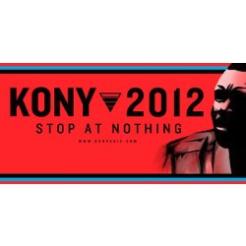Kirsty Weakley explains what troubles her about the recent Kony 2012 viral campaign and reveals who she’ll be supporting instead.
Last week a documentary by US charity Invisible Children, highlighting the plight of abducted Ugandan children ‘went viral’ with more than 75 million hits on YouTube so far. But why do I not feel like congratulating them on a job well done?
And it’s not just me. The reaction from other international development agencies has been somewhat cold and the media backlash has prompted Invisible Children to publish a 3,455-word response to the criticisms on its website.
The early results of the campaign are undeniably impressive in successfully persuaded celebrities including Rihanna, George Clooney and Angelina Jolie to promote the film as well as mobilising its already large supporter base on social networks. It has also definitely succeeded in its intention of making rebel war leader Joseph Kony famous. And from a fundraising perspective it raised an impressive $5m in 48 hours.
Kony 2012 calls for the capture of the leader of the Lord’s Resistance Army (LRA), Joseph Kony, so that he can be tried by the International Criminal Court (he has been on the wanted list since 2005 when he and three others were charged with crimes against humanity and a raft of war crimes). It is also calling for people around the world to blanket their environments with posters on 20 April and donate money to help fund projects and continue campaigning.
But the content of the film has been called into question by other organisations. War Child praised Invisible Children for bringing the issue to light but warns that “capturing him is not a magic bullet”.
Overly simplistic
One of the biggest criticisms levelled at the film is that it has over-simplified what is an incredibly complex issue to the point where it is bordering on inaccurate. In boiling the issue down so far, co-founder of the charity and filmmaker Jason Russell has left out what I would say are some fairly major facts.
In the whole 28 minutes the film fails to mention that Kony is no longer in Uganda, and has not been for some time. I think this is simply patronising and I am confident that most people are capable of understanding that people cross borders – in fact explaining that he had fled the country explains why it is so hard to catch him.
Colonialist overtones
There is an uncomfortable focus on the role of the American military in the film with an assumption that Western armies and diplomats could swoop in and fix the problem by the end of 2012, as though there have not been any real efforts made already. I’m not an expert but finding a man in the African jungle presumably requires specialist local knowledge and tracking skills – even then it must be a bit like trying to find a needle in haystack.
In response to the film Amnesty International’s Africa programme director Erwin van der Borght has said: “Amnesty International believes that efforts to arrest Joseph Kony should be led by the governments of the countries in the region where the LRA operates, not by the US armed forces.
“The UN and the African Union, both of which are involved in the effort to arrest the LRA suspects, also have an essential role to play in supporting efforts to arrest the LRA leaders, in protecting affected communities and monitoring and reporting on the status of human rights protection.”
Distraction from the real issues
War Child added that: “The film is in some ways, five years too late. Kony and the LRA were driven out of Uganda and now move between the Central African Republic, D.R. Congo and southern Sudan. They are thought to number only a few hundred fighters.”
By focusing on this one man it is possible that resources are being diverted from other activities such as tackling the root causes of poverty and inequality that creates the conditions for rebel leaders like Kony (and there are many more like him) to operate.
By creating such a sense of urgency and imposing an artificial deadline the charity will make it harder for themselves and other humanitarian organisations working in the region as people who sign up to support the charity will end up disappointed.
Lessons for others
Other charities should take note of the impact that a well-made and thought-provoking documentary can make when combined with precision planning and celebrity endorsement.
It might have appeared to be an overnight success, but of course it wasn’t. Invisible Children has spent years building up its online community – the night before the campaign launched its Facebook group had 450,000 fans and the charity has been posting videos on YouTube since 2006.
But while I applaud the first-rate filmmaking and the mobilisation of supporters through social networks on such a large scale, I won’t be giving the campaign a donation. Instead I think I might donate to War Child - I learned more about the real issues in five minutes on their website than in the 28 minutes of the Invisible Children film.
Watch the film below. Then read War Child's response.









